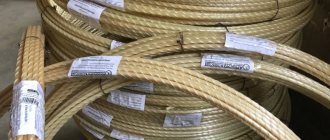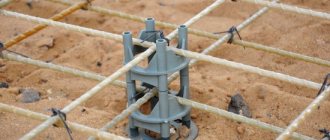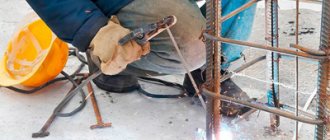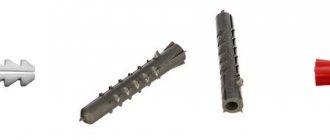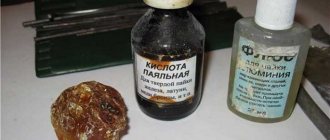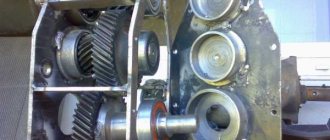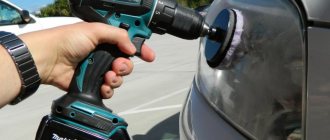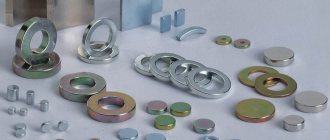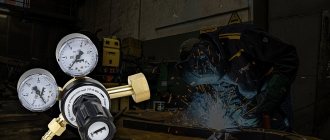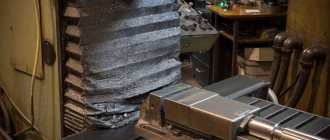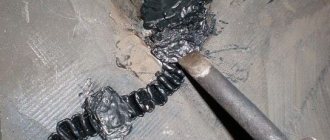Modern construction technologies involve the use of new materials with improved characteristics. One of the latest developments in scientific and construction organizations is plastic reinforcement. Thanks to its complex of operational properties, it successfully competes with metal rods, which are gradually destroyed as a result of corrosion processes. Glass reinforcement is used to provide an increased safety margin for concrete structures in contact with fresh and salt water, as well as aggressive environments.
Composite reinforcement – fiberglass material for strengthening concrete
Composite fiberglass reinforcement is a new building material made from various fibers:
- basalt;
- glass;
- polyamide;
- carbon.
Fiberglass reinforcement is a building material created on the basis of fibers connected by a complex composition.
The name of polymer reinforcement is determined by the type of fibers used:
- basalt-plastic rods are made from basalt thread;
- fiberglass reinforcement is made on the basis of glass fiber.
Novice developers are interested in whether it is possible to use fiberglass reinforcement for the foundation, as well as how fiberglass reinforcement behaves in aerated concrete walls. Modern manufacturing technology, which involves impregnation of a bundle of fibers with a thermoplastic mixture based on polymer components, ensures the required strength of the finished product.
Polymerizing at elevated temperatures, the threads collected in a bundle harden and acquire the required shape. Combining fiber threads can improve performance properties.
Improved adhesion of glass reinforcement to concrete is ensured by applying the following materials to the outer surface of polymer rods:
- fine sand;
- marble particles;
- crushed granite.
Transverse or spiral corrugations increase the strength of the reinforcement and improve adhesion to the concrete mass.
The fibers are bonded together using polyester composite resins
SPA installation features
The properties and technical characteristics of SPA make the material almost ideal for building a house with your own hands. In order for the house to be durable and last for several generations of the family, it is important to correctly install fiberglass reinforcement, taking into account its disadvantages.
Horizontal reinforcement of the foundation
Laying SPA to reinforce the foundation is carried out after installing the formwork and preparing the area. After this, a longitudinal layer of rods is laid. To do this, take rods with a diameter of 8 mm. A transverse one is laid on it. To do this, take a 6 mm SPA. These layers form a grid. The connection nodes are fixed with tightening clamps or knitting wire, the diameter of which is 1 mm, in 2 belts. Connections are made using a hook for tying reinforcement, which you can buy or make yourself using thick wire. For large volumes of work, it is recommended to use an electrically driven tying machine.
The edges of the mesh of rods should be 5 cm from the formwork. The required location can be achieved using clamps or ordinary bricks. When the mesh is ready and positioned correctly, pour the concrete mixture. Caution must be exercised here. The reinforcement for the ASP foundation does not have the same hardness as steel. If poured carelessly, it may bend or move from the specified position. If the rods move, it will be extremely difficult to correct the situation after pouring.
To obtain a solid foundation without voids, the poured concrete mixture is compacted with a construction vibrator.
Plastic fittings - features of building materials
Plastic reinforcement, designed to increase the strength of concrete structures, has its own characteristics.
The main difference of this material is its light weight, as well as its two-layer construction:
- the inner layer is the core of the rod, consisting of longitudinal threads filled with a composite mixture. The core increases the resistance of the material to tensile and compressive loads;
- the outer layer is formed by a group of threads twisted in a spiral. The characteristic arrangement of the outer fibers increases the resistance of the rods to torsion, and also improves the contact of the polymer reinforcement with concrete.
Polymer threads improve the performance properties of composite rods, which successfully compete with standard metal reinforcement. Distinctive features of glass fittings:
- weight reduced by 4-5 times compared to steel rods. The main advantage of the material makes it easier to work and reduce costs associated with transportation;
- The polymer material is twice as durable as steel in terms of tensile strength. This makes it possible to provide the required safety margin with reduced parameters of the outer diameter;
- resistance to corrosive destruction and neutrality to aggressive liquids. Polymer rods retain their properties in a humid environment;
- reduced thermal conductivity coefficient compared to steel. Polymer material allows for the construction and repair of houses, preventing the formation of cold bridges;
- possibility of assembling load-bearing frames without electric welding. This simplifies the process of fixing the bars and also reduces costs.
Fiberglass is used to produce this construction reinforcement
Design features and operational characteristics allow the use of glass reinforcement instead of steel rods to solve a wide range of problems.
Properties of the new material
This type of reinforcement is superior to metal in many properties:
- Strength. Because of this, when knitting a mesh, you can increase the mesh size or use rods of a smaller diameter with the same strength. Both options significantly facilitate the finished structure.
- Immune to water, including sea water. It is no coincidence that composite materials are used in port construction and when laying sewerage and reclamation networks.
- Resistant to acids and alkalis. Thanks to this, structures become more durable, and there is no internal stress due to corrosive swelling.
- Low thermal conductivity. Composite reinforcement improves the performance characteristics of housing, since it is not a conductor of cold inside concrete.
- Lightweight and transportable, which provides significant savings in costs and man-hours.
Designers and construction market participants have appreciated the advantages of composite reinforcement. This progressive material is more economical, and with increasing diameter the difference in favor of the polymer analogue increases.
Another plus is the lack of cracking, since non-metallic elements have the same rate of expansion under heat as concrete. Polymer reinforcement does not create radio interference and does not change its properties under the influence of magnetic fields.
Glass reinforcement - types of rods
Plastic reinforcement is made from different types of threads. The following types of composite rods are used:
- fiberglass, abbreviated as ASP. The core is made of glass fibers that are highly resistant to moisture. The products are used to increase the strength of foundations and road surfaces;
- basalt plastic, marked ABP. Easily distinguished by the black color of basalt fibers. Basalt plastic rods are superior to fiberglass rods in their ability to withstand tensile loads, as well as the magnitude of elastic deformation;
- Carbon fiber rods marked UGP are made on the basis of carbon, used in the production of concrete composites. The increased level of costs for purchasing carbon fiber reinforcement is compensated by the working properties of the material, as well as the ease of working with it;
- combined. Reinforcement with the ACC index is made of basalt and glass fibers and is characterized by increased strength properties. ACC polymer rods on a glass-basalt base are used for special purposes.
The choice of composite rods is carried out depending on the complexity of the tasks.
There are different variations of fitting models, some of which are quite unusual
News
This is not a bow, but a dedication to the giants who think that a good bow should have a force of more than 25 kg. I almost broke my leg while trying to install the bowstring the traditional way.
History of creation:
21 Sep
During my last trip to the plant in Stupino (to buy laminate), at the request of crossbow-making friends, I bought MEGALAMINATE, or rather unidirectional fiberglass plates 12mm thick, 50mm wide, and two meters long. I kept a couple for myself (just in case). Today I decided (for the sake of science) to cut an all-plastic monster out of THIS. Naturally, it will be a flat bow. Length 180cm. The width near the handle is 50mm, at the ends - about 16mm. On the thickening of the handle I glued three fiberglass plates eight mm thick. Tomorrow (if it dries) I'll cut out the handle and test it. Every cloud has a silver lining. Now I know what to process. A grinder disc is best suited for cutting stone or concrete.
22 Sep
Today I carried out tests, now I am limping on my right leg. I installed a test string (steel cable). Somehow, resting the lower end on the floor, the upper end against the edge of the workbench, he rested his knee on the handle, and with both hands he pulled the upper end towards himself. HOOKED Just as I let go, the cable tore out: And I got hit in the knee with the middle of the bow. And since there were clamps hanging on it, damn it, it was not weak. Put a CHAIN instead of the cable. Let him try to break it. There is nothing to measure how much it turns out. I stretched it off the floor with both hands (I don’t know how much), I thought my hands would be torn off. I'll put the bandages on the handles (I'm afraid the textolite will tear off). It'll be sawed off a little, and then we'll see. By the way, in terms of weight, it doesn’t seem to be particularly heavy.
27 Dec
It's time for ELEPHANTS to dig trenches and hide in the crowns of tall trees, as the fiberglass ELEPHANT is close to completion. Today I sawed it rough (by the way, it works EXCELLENTLY with a good file). Actually, even the file itself itches now. It turns out to be a pyramidal bow.
I’m thinking of putting steel cable bands on the epoxy at the transition of the handle to the shoulders (just in case) One thing confuses me: I placed the ends of the bow on two tree stumps and stood on the handle. The bow was bent exactly to the base distance to install the string. I weigh 77kg. WHAT'S THIS? IS THIS PRELOAD?
05 Jan
During the holidays I forged a lot of all sorts of food, and did not ignore the future elephant slaughterer. I made an arrowhead of the appropriate size for it. Well, not with shovels, but beautifully.
09 Jan
I didn't find Kevlar, but I did find a decent sling. Three meters of synthetic. The manufacturer guarantees weight retention of 500 kg. Doesn't stretch. Very clever weaving. The filling is woven into the braid. Thickness 4 mm. This is not a bow, but a dedication to the giants who think that a good bow should have a force of more than 25 kg. While trying to install the bowstring the traditional way, I almost broke my leg. In the picture, the unconventional method of installing the bowstring gives some result, but also not particularly outstanding.
A Kevlar cord 5 mm thick should withstand anything. I’ll donate 3 meters for testing for the miracle bow.
28 Feb
Thanks to Zhenya for the Kevlar! Elephantboy has found at least some kind of bowstring. Almost obnoxious. I'm wearing it for now! And in the end I was able to stretch it (by pressing it with my feet to the floor) by fifteen centimeters. At the same time, the needle of an ordinary 20kg steelyard made two turns with a squeal, then something crunched in it. In general, you can start finishing.
10 Jul
The bow is ready, finished and will be presented on the Epic Bank
You can ask questions and discuss this bow on the Gunsmith forum in the topic: FIBERGLASS BOW
How plastic fittings are made
The production process of polymer reinforcement is carried out on automated lines and includes the following stages:
- Filling the feed module hopper with a polymer composition.
- Feeding composite fibers and ensuring uniform tension.
- Heat treatment of the material to remove water and oil inclusions.
- Loading polymer fibers into a tank with heated binding ingredients.
- Pulling the impregnated threads through a nozzle that winds them.
- Polymerization of the starting material in an oven at high temperature.
- Cooling the resulting rods and cutting them into pieces of the required sizes.
The characteristics of the equipment guarantee the quality of the resulting products.
Scope of glass reinforcement
Polymer reinforcement is used to solve various problems:
- production of composite concrete used for the construction of monolithic structures;
- construction of building foundations and pouring monolithic slabs;
- increasing the strength of walls built of brick;
The scope of application of this building material is extensive.
- construction of port facilities and special structures to strengthen the coastline;
- construction of road surfaces and reinforcement of concrete slopes;
- construction of protective structures for railways and transport highways;
- production of concrete products requiring prestressed reinforcement;
- construction of transport interchanges, bridges, overpasses and overpasses;
- construction of concrete structures in seismic zones.
Plastic rods do not require waterproofing, regardless of the choice of structural reinforcement scheme. The use of fiberglass reinforcement for concrete reinforcement and the use of polymer rods is carried out on the basis of previously performed calculations. Employees of specialized organizations are proficient in the technique of calculating reinforced concrete for construction.
Areas of application and types of fiberglass reinforcement
Currently, SPA is sold not only in the form of rods and coils, but is also offered in the form of reinforcing meshes and reinforcement cages of various shapes and overall dimensions.
Due to the variety of offers and successful experience in use, this material is used in various construction and installation works, as well as for the manufacture of various structures.
The main areas of use of fiberglass reinforcement are:
- reinforcement of concrete structures (wells, walls, etc.) and foundations;
- strengthening masonry made of bricks and blocks of various types;
- during the construction of roads and other types of surfaces;
- for strengthening embankments and other types of foundations.
For your information! SPA has also found its application in summer cottages: it is successfully used in the manufacture of greenhouses and greenhouses as arcs on which covering material is laid, as well as as fencing and supporting structures for fruit and vegetable crops.
Manufacturing of decorative fencing using SPA
Advantages of glass fittings
Developers are interested in what the pros and cons of plastic fittings are. Like all building materials, fiberglass reinforcement has disadvantages and advantages. The main advantages of glass fittings:
- increased safety margin;
- acceptable price level;
- light weight of rods;
- corrosion resistance;
- resistance to aggressive environments;
- reduced thermal conductivity;
Plastic reinforcement is used more and more often in construction today, due to its unique characteristics.
- environmental cleanliness;
- long period of operation;
- ease of machining;
- convenient delivery option;
- possibility of assembling frames without welding;
- preservation of properties at low temperatures;
- dielectric characteristics.
Thanks to a set of advantages, composite rods are popular.
Advantages and disadvantages of the material
Plastic products are inferior in strength to other types of composite reinforcement, but beat them in price.
The relationship between the diameters of reinforcing bars
The advantages of fiberglass reinforcement compared to its metal counterpart are the following:
- lower cost;
- less weight: with the same diameter and length, plastic products are 5-7 times lighter;
- the value of the tensile strength is 3 times greater, which makes it possible in practice to reduce the cross-section of the rods under identical loads;
- not subject to the destructive effects of corrosion caused by chemicals or water, thereby increasing the service life of the material;
- higher speed of installation of frame structures;
- thermal insulation properties;
- dielectric characteristics;
- ease of creating frames of oval and round shapes (with curves);
- ease of transportation.
Among the disadvantages of fiberglass reinforcement, there is an insufficiently developed regulatory framework, which does not allow developers of construction projects to carry out the required calculations. Also problematic is the comparison of steel products with composite products. The necessary data provided by manufacturers is not always reliable.
The low resistance of the material to elevated temperatures (more than 60 degrees) and fire is also a significant disadvantage. Also, plastic rods can withstand less lateral loads than steel rods.
Profiled glass composite rods
In practice, it is often required that the mounted frame be rigid, and fiberglass rods are more ductile in this regard compared to metal ones. This causes some inconvenience during work, complicating the entire process.
The light weight of glass composite rods helps reduce the final weight of the entire structure. Thanks to this, the load on the soil becomes less and the amount of shrinkage of the building is reduced.
Weaknesses of fiberglass rods
Along with the advantages, glass fittings also have disadvantages.
Main disadvantages:
- decrease in strength properties when heated above 200 °C;
- increased likelihood of fire when heated;
- insufficiently high elastic modulus;
- decrease in strength properties during operation and contact with alkalis;
- impossibility of bending rods without the use of special technological methods.
These disadvantages limit the scope of use.
Builder reviews
It is necessary to note the positive reviews about composite reinforcement left by professional builders.
They focus on the following properties:
- increased elasticity;
- ability to perceive deformations;
- reduced thermal conductivity;
- corrosion resistance.
There is also no need for shielding due to dielectric characteristics and neutrality to the effects of electromagnetic radiation. It should be noted that there are no negative reviews about the plastic reinforcement used for the foundation.
